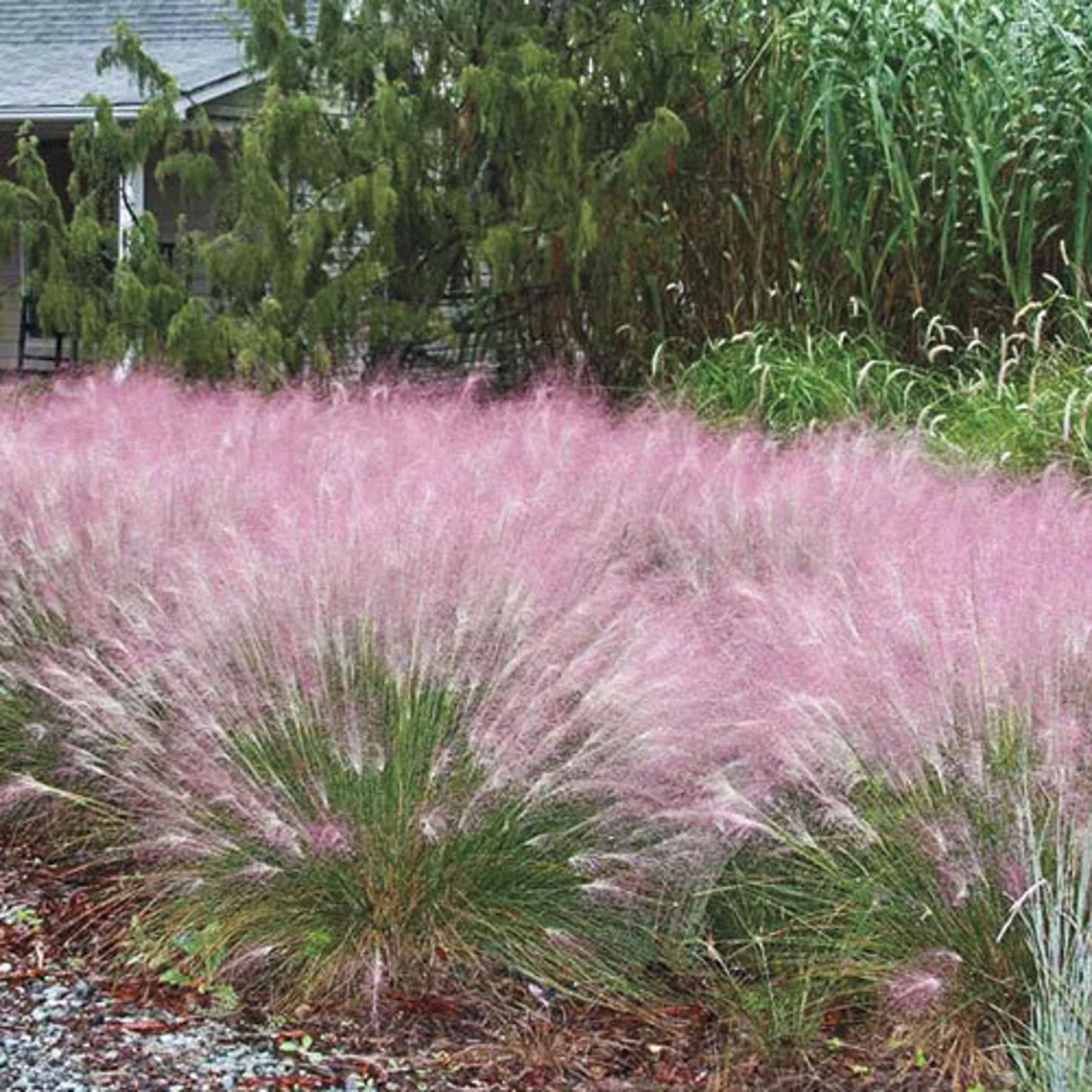What is Pink Muhly Grass?
Pink Muhly (Muhlenbergia capillaris) is a native grass species that is commonly grown for its ornamental value. It is a perennial grass that is native to North America, specifically the southeast and southwestern regions.
Pink Muhly grass is a low-maintenance plant that is deer and drought-resistant, making it a popular choice for gardeners and landscapers. It is also a good choice for planting in large masses or for adding texture to a mixed border.
Overall, Pink Muhly is a beautiful and easy-to-grow grass that adds both color and texture to any garden.
Dimensions
Pink Muhly grass typically grows to a height of 4-6 feet tall and spreads 2-3 feet wide. However, it is important to note that the actual size of the plant can vary depending on factors such as soil type, moisture levels, and sunlight exposure.
Zones
Pink Muhly grass is hardy in USDA plant hardiness zones 6 to 10, meaning it can survive winter temperatures in these zones without any damage. In these zones, it can be grown as a perennial and will come back year after year. In colder zones, it can still be grown but should be treated as an annual or grown in containers and brought indoors for winter protection.
It’s also worth noting that Pink Muhly grass can be grown as an annual in cooler climates, and will still produce its showy blooms in the summertime. The specific climate requirements for Pink Muhly grass include full sun to partial shade and well-drained soil.
How to Tend
Inside
Growing Pink Muhly grass indoors can be done, but it requires some specific care:
- Light: Pink Muhly grass prefers bright, indirect light, so it’s best to place it near a window that receives some sunlight but is not in direct sun. If grown in low light, the plant will become leggy and will not produce as many blooms.
- Water: Pink Muhly grass should be kept consistently moist but not waterlogged. Allow the soil to dry out slightly between waterings, but avoid letting it dry out completely.
- Humidity: Pink Muhly grass prefers a moist, humid environment, so it’s a good idea to place a tray of water near the plant or to use a humidifier.
- Fertilizer: Pink Muhly grass benefits from regular fertilization during the growing season. Use a balanced, water-soluble fertilizer and follow the package instructions for application rates.
- Pruning: Prune Pink Muhly grass regularly to encourage bushier growth and to remove any dead or yellowing leaves. This will also help prevent the plant from becoming too tall and leggy.
It’s important to note that Pink Muhly grass can be a bit finicky when grown indoors, so be patient and persistent in caring for it. With proper care, it can be a beautiful and low-maintenance addition to your indoor space.
Outside
Growing Pink Muhly grass outside is relatively low-maintenance and requires the following care:
- Location: Plant Pink Muhly grass in a location that receives full sun to partial shade and has well-drained soil.
- Water: Pink Muhly grass is drought-resistant and can tolerate periods of dryness, but it prefers evenly moist soil. Water regularly during extended periods of drought or heat.
- Fertilizer: Pink Muhly grass benefits from a light application of fertilizer in the spring to encourage healthy growth. Use a balanced, water-soluble fertilizer and follow the package instructions for application rates.
- Pruning: Prune Pink Muhly grass in late winter or early spring to remove any dead or yellowing leaves and to encourage bushier growth.
- Pests and Diseases: Pink Muhly grass is generally resistant to pests and diseases, but it may be affected by fungal diseases if grown in poorly drained soil. Keep an eye out for any signs of disease, such as discoloration or wilting, and treat as needed.
By providing the proper care and growing conditions, Pink Muhly grass will thrive and add beauty and texture to your outdoor space.
Where to Purchase
You can buy this pink wonder at our Esty shop. Happy Shopping!!


